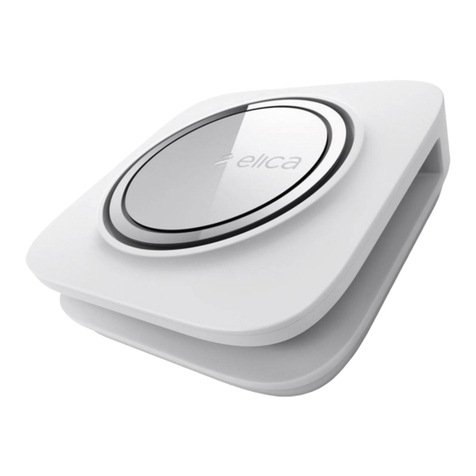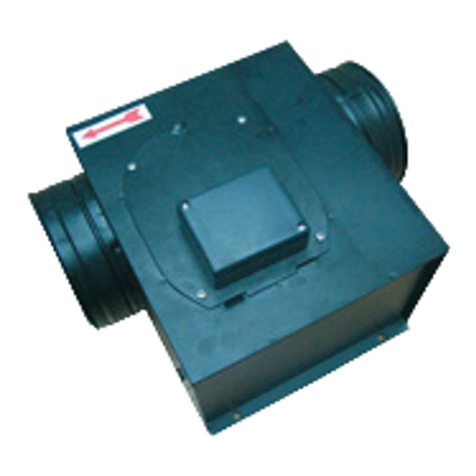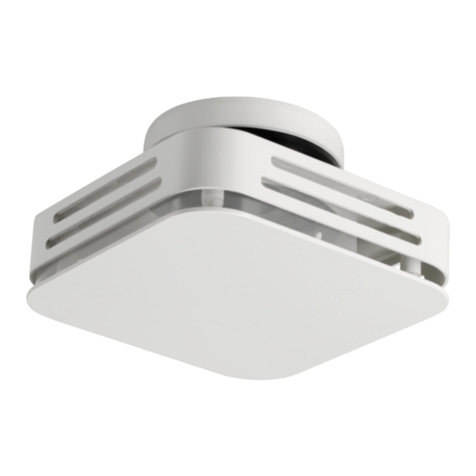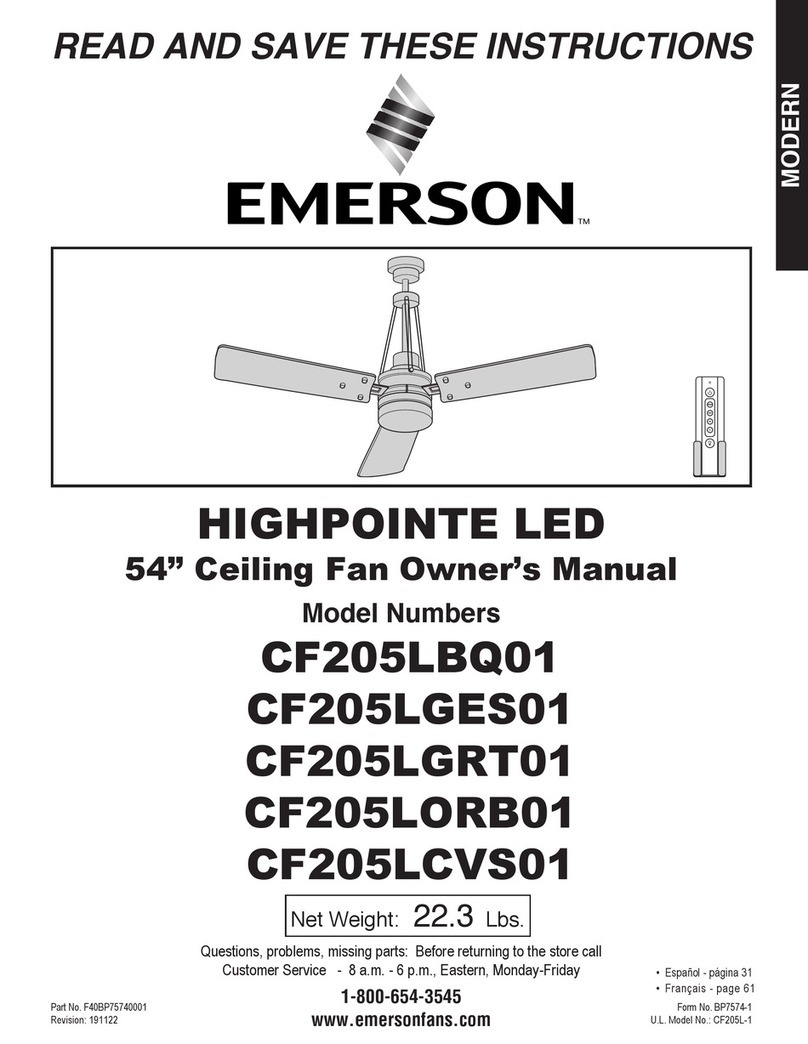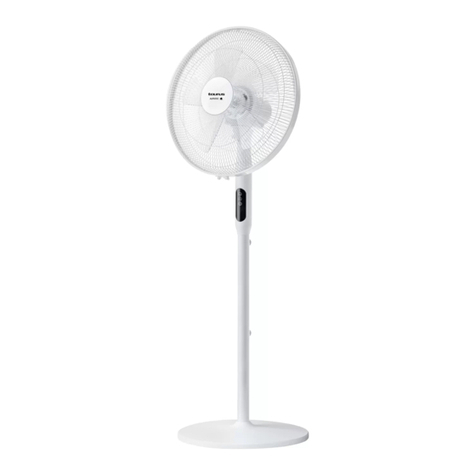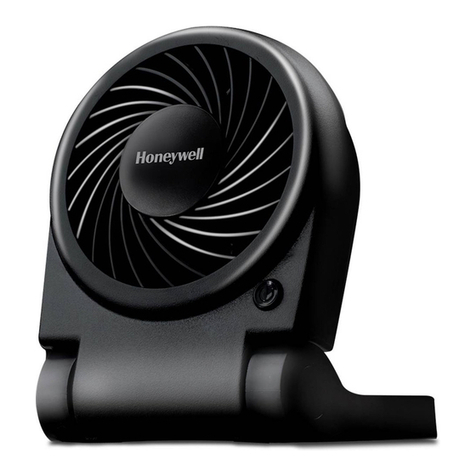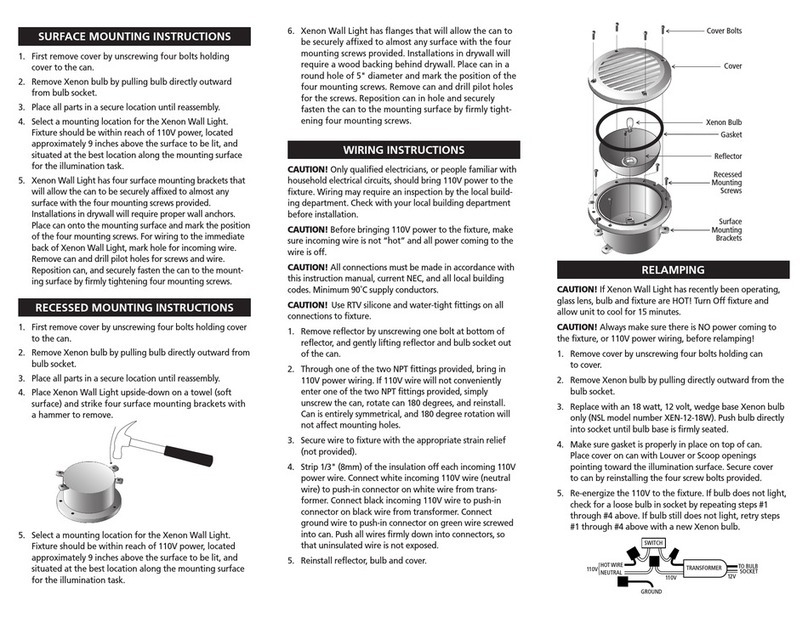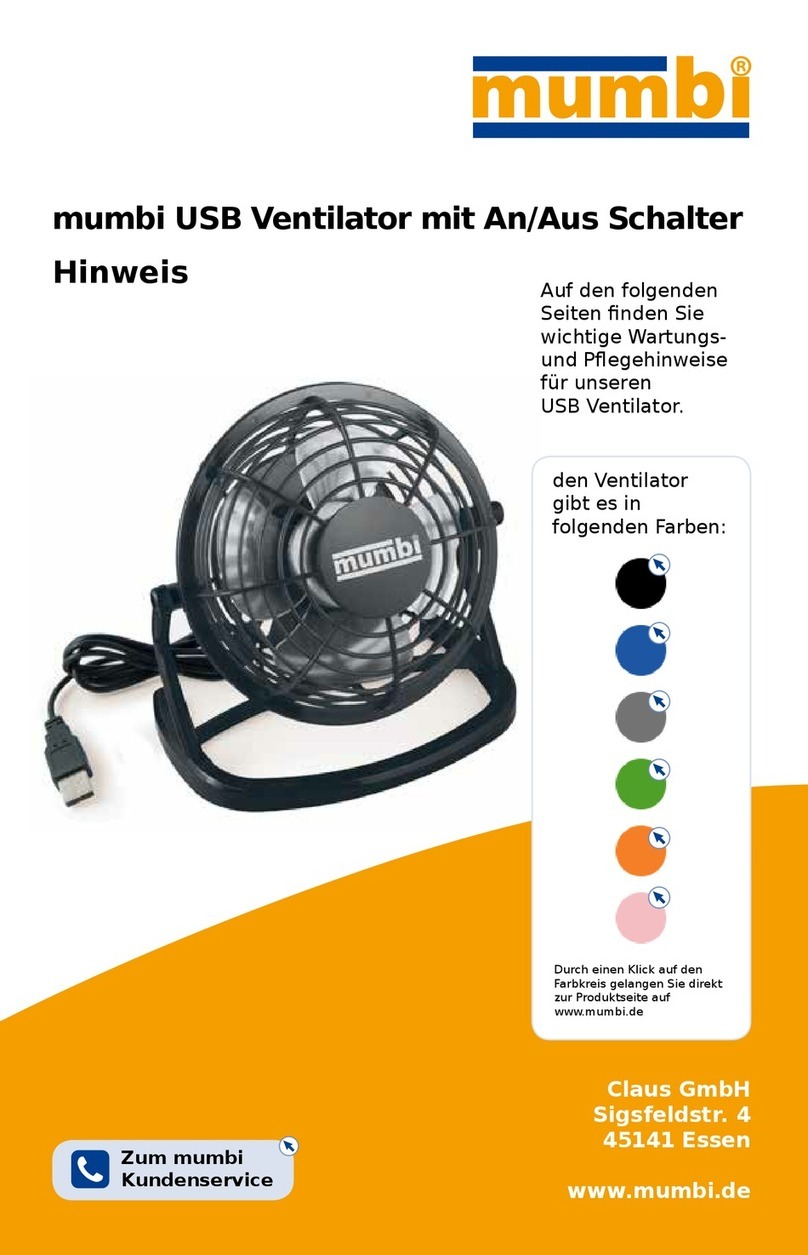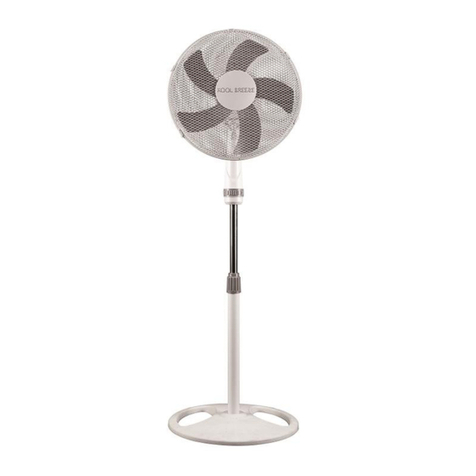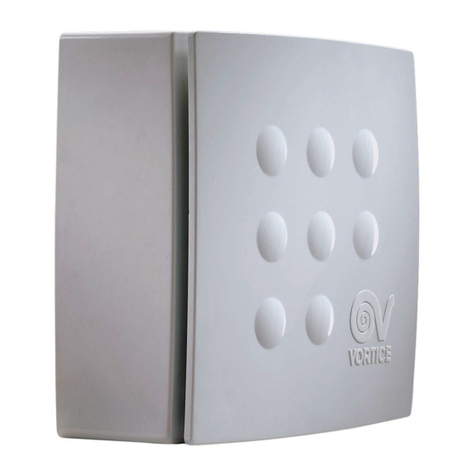ELICA KIT0179549 Installation guide

1
Use, Care, and
Installation Guide
Guide
d’utilisation,
d’entretien et
d’installation
Guía de
instalación, uso y
mantenimiento
READ AND SAVE THESE
INSTRUCTIONS
LISEZ CES
INSTRUCTIONS ET
CONSERVEZ-LES
LEA Y CONSERVE
ESTAS INSTRUCCIONES
LIB0180582
Printed in Mexico
Models: KIT0179549

2
English
APPROVED FOR RESIDENTIAL APPLIANCES
FOR RESIDENTIAL USE ONLY
READ AND SAVE THESE INSTRUCTIONS
PLEASE READ ENTIRE INSTRUCTIONS BEFORE PROCEEDING.
INSTALLATION MUST COMPLY WITH ALL LOCAL CODES.
IMPORTANT: Save these Instructions for the Local Electrical Inspector’s use.
INSTALLER: Please leave these Instructions with this unit for the owner.
OWNER: Please retain these instructions for future reference.
Safety Warning: Turn o power circuit at service panel and lock out panel, before wiring this appliance.
Requirement: 120 V~ AC, 60 Hz. 15 or 20 A Branch Circuit.
Important Safety Notice 3
Electrical Requirements 4
Tools and parts 5
Product dimensions 6
Venting Requirements 6
Installation Instructions 7
Prepare location 7
Install In-Blower system 12
Make Electrical Connection for In-Line Blower Motor System 13
Make Electrical Connection Inside Range Hood Between In-Line Blower System and Range Hood 14

3
Important Safety Notice
I CAUTION
FOR GENERAL VENTILATING USE ONLY. DO NOT USE TO
EXHAUST HAZARDOUS OR EXPLOSIVE MATERIALS OR
VAPOURS.
IWARNING
TO REDUCE THE RISK OF FIRE, ELECTRIC SHOCK, OR
INJURY TO PERSONS, OBSERVE THE FOLLOWING:
A. Use this unit only in the manner intended by the
manufacturer. If you have questions, contact the
manufacturer.
B. Before servicing or cleaning the unit, switch power o at
service panel and lock service panel disconnecting means
to prevent power from being switched on accidentally.
When the service disconnecting means cannot be locked,
securely fasten a prominent warning device, such as a tag,
to the service panel.
C. Installation work and electrical wiring must be done by
qualified person(s) in accordance with all applicable codes
& standards, including fire-rated construction.
D. Sucient air is needed for proper combustion and
exhausting of gases through the flue (Chimney) of fuel
burning equipment to prevent back- drafting.
Follow the heating equipment manufacturers guideline and
safety standards such as those published by the national
fire protection association (NFPA), the american society
for heating, refrigeration and air conditioning engineers
(ASHRAE), and the local code authorities.
E. When cutting or drilling into wall or ceiling, do not damage
electrical wiring and other hidden utilities.
F. Ducted systems must always be vented to the outdoors.
I CAUTION
To reduce risk of fire and to properly exhaust air, be sure to
duct air outside - do not vent exhaust air into spaces within
walls, ceilings, attics, crawl spaces, or garages.
IWARNING
TO REDUCE THE RISK OF FIRE, USE ONLY METAL DUCT
WORK.
Install this hood in accordance with all requirements specified.
IWARNING
To reduce the risk of fire or electric shock, do not use this
hood with any external solid state speed control device.
IWARNING
TO REDUCE THE RISK OF A RANGE TOP GREASE FIRE.
a) Never leave surface units unattended at high settings.
Boilovers cause smoking and greasy spillovers that may
ignite. Heat oils slowly on low or medium settings.
b) Always turn hood ON when cooking at high heat or when
flambeing food (I.e. Crepes Suzette, Cherries Jubilee,
Peppercorn Beef Flambe’).
c) Clean ventilating fans frequently. Grease should not be
allowed to accumulate on fan or filter.
d) Use proper pan size. Always use cookware appropriate for
the size of the surface element.
IWARNING
TO REDUCE THE RISK OF INJURY TO PERSONS, IN THE
EVENT OF A RANGE TOP GREASE FIRE, OBSERVE THE
FOLLOWING:a
a) SMOTHER FLAMES with a close-fitting lid, cookie sheet, or
other metal tray, then turn o the gas burner or the electric
element. BE CAREFUL TO PREVENT BURNS. If the flames
do not go out immediately, EVACUATE AND CALL THE
FIRE DEPARTMENT.
b) NEVER PICK UP A FLAMING PAN - you may be burned.
c) DO NOT USE WATER, including wet dishcloths or towels -
a violent steam explosion will result.
d) Use an extinguisher ONLY if:
1) You know you have a class ABC extinguisher, and you
already know how to operate it.
2)The fire is small and contained in the area where it
started.
3)The fire department is being called.
4)You can fight the fire with your back to an exit.
e) Ducted fans must always be vented to the outdoor.
aBased on “Kitchen Fire Safety Tips” published by NFPA.
I CAUTION
Automatically Operated Device - To reduce the risk of
Injury disconnect from power supply before servicing.
For double Blower Motor Models (ELN136S2, ELN142S2, ELN148SS, ELI136S2, ELI142S2, EAR134S4, EAR140S4, EAR146S4,
ECL136S4, ECL142S4, ECL148S4, ETR134S1, ETR146SS)

4
Installation requirements
Electrical Requirements
IMPORTANT
Observe all governing codes and ordinances.
It is the customer’s responsibility:
• Have a qualified technician install the in-line blower motor
system.
• All openings in the ceiling and wall where the in-line
blower motor system will be installed must be sealed.
• Ensure that the electrical installation is adequate and in
conformance with National Electrical Code, ANSI/NFPA
70 (latest edition), or CSA Standards C22.1-94, Canadian
Electrical Code, Part 1 and C22.2 No. 0-M91 (latest edition)
and all local codes and ordinances.
• If codes permit and a separate ground wire is used, it is
recommended that a qualified electrician determine that
the ground path is adequate.
• A copy of the above code standards can be obtained from:
National Fire Protection Association
One Batterymarch Park
Quincy, MA 02269
CSA International
8501 East Pleasant Valley Road
Cleveland, OH 44131-5575
• A 120 volt, 60 Hz., AC only, 15-amp, fused electrical circuit
is required.
• If the house has aluminum wiring, follow the procedure
below:
1 Connect a section of solid copper wire to the pigtail leads.
2 Connect the aluminum wiring to the added section
of copper wire using special connectors and/or tools
designed and UL listed for joining copper to aluminum.
Follow the electrical connector manufacturer’s
recommended procedure. Aluminum/copper connection
must conform with local codes and industry accepted.
wiring practices.
• Save Installation Instructions for electrical inspector’s use.
• Wire sizes and connections must conform with the rating
of the appliance as specified on the model/serial rating
plate. The model/serial plate is located behind the kit on
the rear wall.
• Wire sizes must conform to the requirements of the
National Electrical Code, ANSI/NFPA 70 (latest edition), or
CSA Standards C22. 1-94, Canadian Electrical Code, Part
1 and C22.2 No. 0-M91 (latest edition) and all local codes
and ordinances.
For Mobile Home Installations
The installation of this external blower motor system must
conform to the Manufactured Home Construction Safety
Standards, Title 24 CFR, Part 328 (formerly the Federal
Standard for Mobile Home Construction and Safety, Title
24, HUD, Part 280) or when such standard is not applicable,
the standard for Manufactured Home Installation 1982
(Manufactured Home Sites, Communities and Setups) ANSI
A225.1/NFPA 501A*, or latest edition, or with local codes.

5
Tools and parts
Gather the required tools and parts before starting the
installation. Read and follow the instructions provided with
any tools listed here.
Tools/Materials required
• Drill
• 11⁄4” (3 cm) drill bit
• 3⁄16” (0.5 mm) drill bit
• Pencil
• Wire stripper or utility knife
• Tape measure or ruler
• Pliers
• Caulking gun and weatherproof caulking compound
• Vent clamps
• Jigsaw or keyhole saw
• Metal snips
• Screwdrivers
•Phillips
•Flat-blade
Parts not supplied
• 6 AWG wires, one each of the following colors: black, white,
red, blue, gray, and green/yellow (ground)
NOTE: The length of the conduit and AWG wires is
determined by the distance between the in-line blower
motor and range hood terminal boxes.
• 11 - UL listed wire connectors.
Parts supplied
Removing parts from the packages. Check that all parts are
included.
• Shell for blower motor assembly
• Hardware bag with:
Supplied Part Pieces Supplied Part Pieces
Strain relief connector (13.5)
26.5 X 3.5 mm screws 10
4.2x8 mm screws 33
Ø 12 mm strain relief
1
6-wire blower connector
1
6x13.5 mm
2
4x1.8mm at washers
4Torx adapter
(T10)1
(T20)1
Spring tab
1
Clip nuts
4
6.3 x 60 mm screws
7Strap 2.5x 95 mm 3
Support bracket
1
6 x 16 mm screws
4
10x50 mm wall anchors
7

6
Product dimensions
14 7⁄8”
(20 cm)
TOP (OUTLET) VIEW
3 3⁄8”
(8.6 cm)
12 15⁄16”
(32.9 cm)
26 1⁄8”
(66.4 cm)
14 11⁄16”
(37.3 cm)
24 3⁄4”
(62.9 cm)
BOTTOM (INLET) VIEW
3 3⁄8”
(8.6 cm)
14 7⁄8”
(20 cm)
16 1⁄8”
(41 cm)
Venting Requirements
• The vent system must terminate to the outdoors.
• Do not terminate the vent system in an attic or other
enclosed area.
• Do not use 4” (10.2 cm) laundry-type vent or wall caps.
• Use round, metal vent only. Rigid metal vent is
recommended. Plastic or metal foil vent is not
recommended.
• The length of the vent system and number of elbows
should be kept to a minimum to provide ecient
performance.
For the most ecient and quiet operation:
• Use no more than three 90° elbows.
• Make sure there is a minimum of 24” (61.0 cm) of straight
vent between the elbows if more than 1 elbow is used.
• Do not install 2 elbows together.
• Use clamps to seal all joints in the vent system.
• The vent system must have a damper.
• Use weatherproof caulking to seal the exterior wall or roof
opening around the cap.
• The size of the vent should be uniform.
Cold weather installations
An additional backdraft damper should be installed to
minimize backward cold air flow. A thermal break should be
installed to minimize conduction of outside temperatures as
part of the vent system. The damper should be on the cold air
side of the thermal break.
The thermal break should be as close as possible to where the
vent system enters the heated portion of the house.
Typical In-line Blower System Installations
A 8” (20.32 cm) - 10” (25.4 cm) round vent system is needed
for installation (not included). The in-line blower system inlet
and outlet openings are 8” (20.32 cm) - 10” (25.4 cm) round.
The exhaust (outlet) opening on the range hood must also be
8” (20.32 cm) - 10” (25.4 cm) round.
NOTE: Flexible vent is not recommended. Flexible vent
creates back pressure and air turbulence that greatly reduce
performance.
The vent system can terminate either through the roof or wall.
NOTE: Plywood may be used as a mounting base to span
open areas between ceiling joists and rafters. If used, be sure
to use plywood capable of supporting the weight of the in-
line blower system (50 lb [22.6 kg]).
A
B
C
D
E
E
A. Mount on top of ceiling joists.
B. Mount from cross-members tied to
trusses.
C. Duct horizontal; mount to cross-mem-
bers tied to trusses.
D. Mount on underside of roof rafters.
E. Plywood

7
Installation Instructions
Prepare location
• Before making cutouts, make sure there is proper
clearance within the ceiling or wall for the exhaust vent.
• When cutting or drilling into the ceiling or wall, do not
damage electrical wiring or other hidden utilities.
• Check that all installation parts have been removed from
the shipping carton.
NOTE: For the correct performance of your In-Line Blower
System you must remove the Range Hood Internal Motor
Blower.
Remove Range Hood Internal Motor Blower
1 Remove grease filters from range hood.
2 Disconnect the blower power cord from de wire box.
B
A
A. Wire box connector
B. Power cord
3 For EAR134S4, EAR140S4, EAR146S4, ECL136S4,
ECL142S4, ECL148S4, ETR134S1 and ETR146SS range
hood models you have to remove the 4 - 6 x 16 mm screws
holding the blower motor.
4 For ELN136S2, ELN142S2, ELN148SS, ELI136S2 and
ELI142S2 models remove duct covers and the 4 - 6 x 16
mm blower motor screws.
5 Remove the motor mounting plate by setting free the
spring clip.
NOTE: The spring clip should be outside the slot in the
mounting plate.
A. Mounting plate
B. Spring Clip
A
B
A. Mounting plate
B. Spring Clip
A
B

8
6 Slide out mounting plate to the left from under the motor
mounting bracket.
A
B
A. Motor mounting plate
B. Motor mounting bracket
A
B
A. Motor mounting plate
B. Motor mounting bracket
7 Remove the range hood internal blower motor.
8 Replace the grease filters on the hood.
Prepare for Mounting the In-Line Blower System
The In-Line Blower System must be fastened to a secure
structure of the roof, ceiling, wall, floor, or new or existing
frame construction. The 4 holes on either the inlet (bottom)
side or the outlet (top) side of the blower must be used to
mount the in-line blower system to the structure.
NOTE: The mounting hole locations must span the studs.
Additional stud framing may be required. Plywood may be
used to span open areas between ceiling joists or roof rafters
to aid installation. This structure must be strong enough to
support the weight of the in-line blower system (50 lb [22.6
kg] min).
Prepare the In-line Blower System
IWARNING
Excessive Weight Hazard
Use two or more people to move and install range hood.
Failure to do so can result in back or other injury.
1 Disconnect power.
2 Determine which venting method to use: roof or wall
exhaust.
3 Remove the 6 - 6.5 x 3.5 mm screws from the front cover
of the shell and save them for later. Remove the front cover
of the shell and set it aside.
4 Remove the 6 - 4.2 x 8 mm screws from the back of the
shell.
A
B
A. Front cover
B. Back of the shell
5 Rotate the shell and place it with the back over a covered
surface.
6 Remove 4 - 4.2 x 8 mm screws from each side cover and
remove the covers.
A
B
B
B
B
A. Side covers
B. 4.2 x 8 mm screws
For models EAR134S4, EAR140S4, EAR146S4, ECL136S4,
ECL142S4, ECL148S4, ETR134S1 and ETR146SS
Fix support bracket and spring tab, support brackets to the
appropriate screw slots following the next image.
B
A
C
D
A. Support bracket
B. Spring tab
C. 3 - 4.2 x 8 mm screws
D. 2 - 4.2 x 8 mm screws

9
7 Slide halfway the mounting plate of the blower motor
assembly, from the front of the shell, gently over the
support bracket and the spring tab inside the shell with the
wiring connection pointing to the front.
A
B
C
A. Mounting plate
B. Spring tab
C. Wiring connection
8 Push the right end of the motor mounting plate up and
snap it into the spring tab.
NOTE: The spring tab should be outside the slot in the
mounting plate.
9 Place nuts over the top of the shell on the right slots.
A
A
A. Nuts
10 Align mounting holes in motor mounting plate with motor
mounting clip nuts and install 5 - 6 x 16 mm screws with
clip nuts.
A
B
C
A. Screw with lock washer
B. Mounting hole in motor mounting plate
C. Clip nut
11 Attach power cord connector from the range hood to
connector on wiring box.
B
A
A. Wiring box connector
B. Power supply connector from range hood
12 Replace side covers with the previously removed screws
and with 6 - 4.2 x 8 mm screws from the hardware bag for
each cover and tighten.

10
13 Replace the 6 screws previously retired and place the
additional 10 - 4.2 x 8 mm screws contained on the
hardware bag to the back cover of the shell.
For models ELN136S2, ELN142S2, ELN148SS, ELI136S2 and
ELI142S2
1 Remove the 4 - 6.5 x 3.5 mm top plate screws and the top
shell plate.
A
B
B
A. Top plate
B. 4 screws
2 Fix support bracket and spring tab, support brackets to the
appropriate screw slots following the next image.
A
BD
C
A. Support bracket
B. Spring tab
C. 3 - 4.2 x 8 mm screws
D. 2 - 4.2 x 8 mm screws
3 Slide halfway the mounting plate of the blower motor
assembly, from the side of the shell, gently over the
support bracket and the spring tab inside the shell with the
wiring connection pointing to the front.
A. Mounting plate
B. Spring tab
C. Wiring connection
D. Support bracket
A
B
C
D
4 Push the right end of the motor mounting plate up and
snap it into the spring tab.
NOTE: The spring tab should be outside the slot in the
mounting plate.
A
B
A. Motor mounting plate
B. Spring clip

11
5 Place clip nuts over the top of the shell on the right slots
6 Replace the 4 - 6.5 x 3.5 mm top plate screws and the top
shell plate.
A
B
B
A. Top plate
B. 4 screws
7 Align mounting holes in motor mounting plate with motor
mounting clip nuts and install 5 - 6 x 16 mm screws and clip
nuts.
A
B
C
A. Screw with lock washer
B. Mounting hole in motor mounting plate
C. Clip nut
8 Attach power cord connector from the range hood to
connector on wiring box.
B
A
A. Wiring box connector
B. Power supply connector from range hood
9 Replace side covers with the previously removed screws
and with 6 - 4.2 x 8 mm screws from the hardware bag for
each cover and tighten.
10 Replace the 6 screws previously retired and place the
additional 10 - 4.2 x 8 mm screws contained on the
hardware bag to the back cover of the shell.

12
Install In-Blower system
NOTE: The blower motor housing can be mounted using
4 holes from either the inlet side or the outlet side of the
blower.
A
A
A
A
A
A
A. Mounting holes
1 Using two or more people, move the in-line blower motor
system to the mounting location.
2 Position the in-line blower motor housing in its mounting
location and mark the 4 mounting hole locations.
3 Drill 4 mounting pilot holes using a ³⁄₁₆” (0.5 cm) drill bit.
4 Attach the in-line blower motor housing to the mounting
location with mounting 4 - 6.3 x 60 mm screws and 4 - 4
x 1.8 mm washers. Parts are included with the range hood
motor kit.
5 If removed, reinstall the blower motor assembly and secure
it with the screws previously removed.
6 If removed, reattach the motor electrical plug to the
connector on the blower motor assembly.
Complete Preparation
1 Determine and make all necessary cuts for the vent system.
IMPORTANT: When cutting or drilling into the ceiling or
wall, do not damage electrical wiring or other hidden
utilities.
2 Determine the location where the ¹⁄₂” (1.3 cm) wiring
conduit will be routed through the ceiling or wall between
the in-line blower and the range hood.
3 Drill a 1¹⁄₄” (3.2 cm) hole at this location.
4 Locate the electrical terminal boxes in the in-line blower
housing and range hood. Remove the terminal box covers
and set the covers and screws aside.
A
B
A. Terminal Box Cover
B. Knockout
5 Remove the electrical knockout from the in-line blower
housing and range hood (see the range hood installation
instructions) to prepare for the installation of the UL listed
or CSA approved ¹⁄₂” (1.3 cm) wiring conduit and conduit
connector.
6 With the range hood mounted (see the range hood
installation instructions), run the ¹⁄₂” (1.3 cm) wiring conduit
between the in-line blower motor housing and the range
hood. Pull enough ¹⁄₂” wiring conduit to allow for easy
connection to the terminal boxes in the in-line blower
housing and range hood.
A
B
C
D
F
E
A. In-Line Blower Kit
B. Range Hood Terminal Box
C. Power Supply wiring Conduit
D. In-Line Blower Wiring Conduit (not
included)
E. In-Line Blower Terminal Box
F. In-Line Motor Electrical Plug Cable

13
7 Replace the front cover of the shell and fix it with the 6
screws previously retired and place the additional 10 - 6.5 x
3.5 mm screws contained on the hardware bag.
8 Install the conduit connectors and conduit to the in-line
blower housing and range hood electrical terminal boxes.
9 Connect the vent system to the range hood and in-line
blower system and seal all joints with clamps. F
E
B
G
A
C
D
A. Vent System
B. In line Blower Motor
C. Ceiling
D. Roof rafters/ Plywood
E. In line Blower Wiring Conduit (not
included)
F. Power Supply Wiring Conduit
G.Hood Insert
Make Electrical Connection for In-Line Blower Motor System
IWARNING
Electrical Shock Hazard
Disconnect power before servicing.
Replace all parts and panels before operating.
Failure to do so can result in death or electrical shock.
IWARNING
Electrical Shock Hazard
Electrically ground blower.
Connect ground wire to green and yellow ground wire in
terminal box.
Failure to do so can result in death or electrical shock.
NOTE: The electrical diagram is attached at the end of the
document.
Electrical Connection Inside In-line Blower System
1 Disconnect power.
2 Connect the wires from the wiring conduit to the wires
from the motor electrical plug cable inside the in-line
blower housing terminal box.
3 Use UL listed wire connectors and connect the black wires
(C) together.
4 Use UL listed wire connectors and connect the white wires
(D) together.
5 Use UL listed wire connectors and connect the red wires
(E) together.
6 Use UL listed wire connectors and connect the blue wires
(F) together.
7 Use UL listed wire connectors and connect the gray wires
(G) together.
8 Connect the green (or green/yellow) ground wire from the
wiring conduit to the green (or yellow/green), ground wire
(H) in the terminal box using UL listed wire connectors.
A
B
C
D
E
F
G
H
I
A. Strain relief
B. UL listed wire connectors
C. Black wires
D. White wires
E. Red wires
F. Blue wires
G.Gray wires
H. Green (or yellow/ green) and green / yellow wires
I. Motor electrical plug cable
9 Once the connection is done, is necessary to adjust the 6
wire connector with the included strap.
A. Ground wires connection
B. 6-9 wire connector
C. Strap
D. Strain relief
A
B
C
D
10 Reinstall the in-line blower terminal box cover and screws.
11 Reinstall the front cover of the in-line blower housing and
secure it with 10 mounting screws.

14
Make Electrical Connection Inside Range Hood Between In-Line Blower System and Range Hood
1 With the range hood mounted (see the range hood
installation instructions), locate the wiring cable connector
inside the range hood.
C
D
A
B
MODELS ETR134S1, ETR146SS, EAR134S4, EAR140S4 and
EAR146S4
A. Range Hood Junction Box
B. Range Hood knockout for Wire Connector Assembly
C. Wire Connector Assembly (provided in the In-Line Blower Kit)
D. Power Supply Wiring Conduit
MODELS ELN136S2, ELN142S2, ELN148SS,
ELI136S2 and ELI142S2
A. Range Hood Junction Box
B. Range Hood knockout for Wire Connector Assembly
C. Wire Connector Assembly (provided in the External Blower Kit)
D. Power Supply Wiring Conduit
MODELS ECL136S4, ECL142S4 and ECL148S4
A. Range Hood Junction Box
B. Range Hood knockout for Wire Connector Assembly
C. Wire Connector Assembly (provided in the External Blower Kit)
D. Power Supply Wiring Conduit
2 Connect the 6 wire connector assembly supplied with the
in-line blower motor system to the mating connector from
the range hood.
B
A
A. Wire Connector Assembly (provided in the In-Line Blower Kit)
B. Hood Insert Blower Connector
3 Install UL listed or CSA approved strain reliefs. Run through
the strain reliefs the 6 wire connector and the In-Line
Blower wiring conduit (not incluided leaving enough wire
length to make the wiring connections.
4 Tighten the strain relief screws.
5 Connect the wires from the 6- wire connector assembly to
the wires from the wiring conduit inside the range hood
terminal box.
6 NOTE: Connect the green (or green/yellow) ground wire
from the wiring conduit to the green (or bare) ground wire
from the home power supply and to the and to the green/
yellow ground wire from the 6-wire connector assembly
(H) using UL listed wire connectors (see the “Make
Electrical Power Supply Connections to Range Hood”
section in the range hood installation instructions).
A
B
C
D
E
F
G
H
I
A. Strain relief
B. UL listed wire connectors
C. Black wires
D. White wires
E. Red wires
F. Blue wires
G.Gray wires
H. Green (or yellow/ green) and green / yellow wires
I. Motor electrical plug cable
7 Connect the home power supply wiring to the range hood
following the instructions that are supplied with the range
hood.
8 Reinstall the range hood terminal box cover.
9 Reconnect power.

ELICA North America
TWO-YEAR LIMITED WARRANTY
TO OBTAIN SERVICE UNDER WARRANTY
Owner must present proof of original purchase date. Please keep a copy of your dated proof of purchase (sales slip) in
order to obtain service under warranty.
PARTS AND SERVICE WARRANTY
For the period of two (2) years from the date of the original purchase, Elica will provide free of charge, non consumable
parts or components that failed due to manufacturing defects. During these two (2) years limited warranty, Elica will also
provide free of charge, all labor and in-home service to replace any defective parts.
WHAT IS NOT COVERED
• Damage or failure to the product caused by accident or act of God, such as, flood, fire or earthquake.
• Damage or failure caused by modification of the product or use of non-genuine parts.
• Damage or failure to the product caused during delivery, handling or installation.
• Damage or failure to the product caused by operator abuse.
• Damage or failure to the product caused by dwelling fuse replacement or resetting of circuit breakers.
• Damage or failure caused by use of product in a commercial application.
• Service trips to dwelling to provide use or installation guidance.
• Light bulbs, metal or carbon filters and any other consumable part.
• Normal wear of finish.
• Wear to finish due to operator abuse, improper maintenance, use of corrosive or abrasive cleaning products/pads and
• When the product has not been operated in accordance with the accompanying instructions for use.
oven cleaner products.
WHO IS COVERED
This warranty is extended to the original purchaser for products purchased for ordinary residential use in North America
(Including the United States, Guam, Puerto Rico, US Virgin Islands & Canada).
This warranty is non-transferable and applies only to the original purchaser and does not extend to subsequent owners of
the product. This warranty is made expressly in lieu of all other warranties, expressed or implied, including, but not limited
to any implied warranty of merchantability or fitness for a particular purpose and all other obligations on the part of Elica
North America, provided, however, that if the disclaimer of implied warranties is ineective under applicable law, the dura-
tion of any implied warranty arising by operation of law shall be limited to two (2) years from the date of original purchase
at retail or such longer period as may be required by applicable law.
This warranty does not cover any special, incidental and/or consequential damages, nor loss of profits, suered by the
original purchaser, its customers and/or the users of the Products.
WHO TO CONTACT
To obtain service under warranty or for any service related question:
USA & CANADA - Western Provinces
SERVICE POWER
888 732 8018
CANADA - Ontario Province
AGI Services
888 651 2534
CANADA - Quebec & Atlantic Provinces
Ateliers G. Paquette
800 463 0119
•
•
To ensure prompt after-sales service, when you call we will kindly ask you to provide the following information indicated
on the nameplate inside the hood: hood model, 12 NC and date of purchase on original invoice.To access the nameplate,
all you have to do is remove the grease filters.
•
Register your product in
elica.com
and earn a 3rd year of factory
warranty, covering all parts
plus in-home labor.
12NC:
Hood model:
Serial No:
Date of purchase on original invoice:

16
Français
APPROUVÉ POUR LES APPAREILS DE TYPE RÉSIDENTIEL
POUR UNE UTILISATION RÉSIDENTIELLE SEULEMENT
LISEZ CES INSTRUCTIONS ET CONSERVEZ-LES
VEUILLEZ LIRE CES INSTRUCTIONS AU COMPLET AVANT DE COMMENCER.
L’INSTALLATION DE L’APPAREIL DOIT RESPECTER TOUS LES CODES EN VIGUEUR.
IMPORTANT : Conservez ces instructions afin de pouvoir les remettre à l’inspecteur-électricien de votre région.
INSTALLATEUR : Veuillez laisser ces instructions avec l’appareil pour le propriétaire.
PROPRIÉTAIRE : Veuillez conserver ces instructions pour pouvoir vous y référer plus tard.
Avertissement de sécurité : Coupez l’alimentation du circuit dans le panneau électrique et verrouillez le
panneau avant de raccorder les fils de cet appareil.
Exigence : 120 V c.a., 60 Hz circuit de dérivation de 15 V c.a., 20 Hz, de 15 ou 20 A.
Avis de Sécurité Important 17
Exigences électriques 18
Outils et pièces 19
Dimension du produit 20
Exigences concernant l’évacuation 20
Instructions d’ Installation 21
Préparation de l’emplacement 21
Installer le Système de Soufflante en Ligne 26
Faire le Raccordement Électrique pour le Système de Moteur de Soufflante en Ligne 27
Raccordement électrique à l’intérieur de la hotte de cuisine entre un Système de Soufflante en ligne et une hotte de
cuisinière 28

17
Avis de Sécurité Important
I AVERTISSEMENT
POUR RÉDUIRE LES RISQUES D’INCENDIE, DE CHOC
ÉLECTRIQUE ET DE BLESSURE, RESPECTER LES DIRECTIVES
SUIVANTES:
A. Utiliser cet appareil uniquement aux fins prévues par le
fabricant. Si vous avez des questions à propos de l’appareil,
communiquez avec le fabricant.
B. Avant de faire l’entretien de l’appareil ou de le nettoyer,
coupez l’alimentation dans le panneau électrique et
verrouillez le panneau en bloquant le dispositif permettant
d’empêcher d’activer l’alimentation accidentellement. S’il
n’est pas possible de verrouiller l’accès au panneau, fixez
une étiquette très voyante au panneau électrique.
C. Une personne qualifiée doit eectuer l’installation et le
câblage des fils électriques en conformité avec tous les
codes et toutes les normes, y compris la cote de résistance
au feu.
D. Il est important de prévoir susamment d’air pour assurer
une bonne combustion de l’équipement de chaue et
l’évacuation adéquates des gaz par le conduit de cheminé
afin de prévenir les refoulements d’air. Respectez les
directives et les normes de sécurité des fabricants de
l’équipement de chauage, comme celles publiées par la
National Fire Protection Association (NFPA), la American
Society for Heating, Refrigeration and Air Conditioning
Engineers (ASHRAE) et le code des autorités de votre
région.
E. Au moment de couper ou de percer un mur ou un plafond,
assurez-vous de ne pas endommager la filerie électrique ou
tout autre accès à un service publique.
F. Il faut toujours évacuer à l’extérieur les systèmes conduit.
I ATTENTION
Pour réduire les risques d’incendie et évacuer l’air correctement,
assurez-vous que le conduit mène à l’extérieur; il ne faut pas
évacuer l’air dans l’espace entre les murs, dans les plafonds, dans
les greniers, les vides sanitaires ou les garages.
I AVERTISSEMENT
POUR RÉDUIRE DES RISQUES D’INCENDIE, UTILISEZ UNI-
QUEMENT DES CONDUITS EN MÉTAL.
Installez cette hotte en respectant toutes les exigences
mentionnées.
I AVERTISSEMENT
POUR RÉDUIRE LES RISQUES D’INCENDIE DE GRAISSE SUR
LES CUISINIÈRES.
a) Ne laissez jamais la cuisinière sans surveillance lorsqu’elle
est réglée à une haute température. Les débordements par
bouillonnement causent de la fumée et des débordements
de gras qui peuvent s’enflammer. Faites chauer l’huile
lentement, à une température basse ou moyenne.
b) Faites toujours fonctionner la hotte lorsque vous utilisez
la cuisinière à une haute température ou que vous faites
flamber des aliments (P. ex.: crêpes Suzette, cerises
jubilées, boeuf au poivre flambé).
c) Nettoyez les hélices de ventilation fréquemment. Il ne faut
pas que la graisse s’accumule sur les filres ou les hélices.
d) Utilisez le bon format de casserole. Utilisez toujours un
chaudron de taille approprié à l’élément de la cuisinière.
e) Convient pour utilisation dans la zone de cuisson domestique.
I AVERTISSEMENT
POUR ÉVITER DE BLESSER QUELQU’UN LORS D’UN
INCENDIE DE GRAISSE SUR LA CUISINIÈRE, SUIVRE LES
CONSEILS SUIVANTS:a
a) ÉTOUFFER LES FLAMMES avec un couvercle aux
dimensions de la taque de cuisson, une tôle à biscuit
ou tout autre plateau métallique, puis couper le gaz ou
l’alimentation électrique de la cuisinière. FAIRE ATTENTION
A NE PAS SE BRÛLER. Si les flammes ne s’éteignent pas
immédiatement, QUITTER LA PIÈCE ET APPELER LES
POMPIERS.
b) NE JAMAIS PRENDRE EN MAIN UNE CASSEROLE N FEU,
vous pourriez vous blesser.
c) NE PAS UTILISER D’EAU, y compris les essuies de vaisselle
ou les serviettes humides – une violente explosion due à la
vapeur formée pourrait survenir.
d) Utiliser un extincteur SEULEMENT si:
1) Vous êtes sûr d’avoir un extincteur de classe ABC que
vous savez utiliser.
2)Le feu est petit et confiné à la zone où il s’est formé.
3)Les pompiers ont été appelés.
4)Vous pouvez lutter contre le feu avec une sortie derrière
vous.f
a Recommandations tirées des conseils de sécurité en cas d’incendie de cuisine
publiés par la NFPA..
I ATTENTION
Dispositif à fonctionnement automatique - Pour réduire le
risque de blessures, débranchez l’appareil de l’alimentation
électrique avant de le réparer.
Pour les modèles de moteurs de soufflerie double (ELN136S2, ELN142S2, ELN148SS, ELI136S2,
ELI142S2, EAR134S4, EAR140S4, EAR146S4, ECL136S4, ECL142S4, ECL148S4, ETR134S1,
ETR146SS)

18
Exigences d’ installation
Exigences électriques
IMPORTANT
Respectez tous les codes et les ordonnances en vigueur.
Le client a la responsabilité de :
• Contacter un électricien-installateur.
• Vérifier que l’installation électrique est adéquate et
conforme avec le Code national de l’électricité, ANSI/
NFPA 70 (la plus récente édition*), ou les normes C22.1-94,
Code canadien de l’électricité, Partie 1 et C22.2 No.0-M91
(La plus récente édition**) de la CSA, ainsi que tous les
codes et les ordonnances de votre région.
• Si le code le permet et que vous utilisez un fil de mise à la
tere distinct, il est recommandé de faire vérifier le chemin
du fil par un électricien.
• Une copie des normes du code ci-dessus peut être
obtenue auprès de :
National Fire Protection Association
One Batterymarch Park
Quincy, MA 02269
CSA International
8501 East Pleasant Valley Road
Cleveland, OH 44131-5575
• L’appareil doit être alimenté par un circuit de 120 V, CA
seulement, 60 Hz, 15 A, protégé par fusible.
• Si le domicile est équipé d’un câblage en aluminium, suivre
les instructions suivantes :
1 Connecter une section de câble en cuivre massif aux
conducteurs en queue de cochon.
2 Connecter le câblage en aluminium à la section ajoutée de
câblage en cuivre en utilisant des connecteurs et/ou des
outils spécialement conçus et homologués UL pour fixer le
cuivre à l’aluminium.
Appliquer la procédure recommandée par le fabricant
des connecteurs. La connexion aluminium/cuivre doit être
conforme aux codes locaux et aux pratiques de câblage
acceptées par l’industrie.
• Le calibre des conducteurs et les connexions doivent être
compatibles avec la demande de courant de l’appareil
spécifiée sur la plaque signalétique. La plaque signalétique
de l’appareil est située à l’intérieur du boîtier du moteur.
• Le calibre des conducteurs doit satisfaire aux exigences
de la plus récente édition de la norme National Electrical
Code, ANSI/NFPA 70, ou de la norme CSA C22.1-94,
Code canadien de l’électricité, partie 1 et C22.2 n° 0-M91
(dernière édition) et de tous les codes et règlements en
vigueur.
Pour les installations de maisons mobiles
L’installation de ce système de moteur soufflant externe doit
être conforme aux Manufactured Home Construction Safety
Standards, Title 24 CFR, Part 328 (anciennement Federal
Standard for Mobile Home Construction and Safety, Title 24,
HUD, Part 280) ou, si cette norme n’est pas applicable, à la
norme Manufactured Home Installation 1982 (Manufactured
Home Sites, Communities and Setups) ANSI A225.1/NFPA
501A*, ou à la dernière édition, ou aux codes locaux.

19
Outils et pièces
Rassembler les outils et composants nécessaires avant
d’entreprendre l’installation. Lire et observer les instructions
fournies avec chacun des outils de la liste ci-dessous.
Outils nécessaires
• Perceuse
• Foret de 1¼” (3 cm)
• Foret de ³⁄₁₆” (0,5 cm)
• Crayon
• Pince à dénuder ou couteau utilitaire
• Mètre-ruban ou règle
• Pince
• Pistolet à calfeutrage et composé de calfeutrage résistant
aux intempéries
• Brides de conduit
• Scie sauteuse ou scie à guichet
• Screwdrivers
•Phillips
•Lame-plate
Pièces non fournies
• 6 conducteurs de calibre 18 AWG de chacune des couleurs
suivantes : noir, blanc, rouge, bleu, gris et vert ou vert/
jaune (terre).
REMARQUE: La longueur du conduit et des cables
AWG est d.terminée par la distance entre le moteur du
ventilateur interne et les botiers de raccordement de la
hotte.
• 11 connecteurs de fils homologués UL
Pièces fournies
Retirer les pièces de leur emballage. Vérifier que toutes les
pièces sont présentes.
• Carcasse pour l’assemblage du moteur de la souante
• Sac de matériel avec :
Pièce fournie Qté Pièce fournie Qté
Décharge de traction connector (13,5)
26.5 X 3.5 mm vis de montage 10
4.2x8 mm vis de montage 33
Ø 12 mm Décharge de traction
1
6-Câble de prise
1
6x13.5 mm
2
4x1.8mm rondelles plates
4Torx adaptateur
(T10)1
(T20)1
Languette à ressort
1
Écrous de xation
4
6.3 x 60 mm vis de montage
7Bride 2.5x 95 mm 3
Support de montage
1
6 x 16 mm vis de montage
4
10x50 mm ancrages muraux
7

20
Dimension du produit
14 7⁄8”
(20 cm)
VUE DE DESSUS (SORTIE)
3 3⁄8”
(8.6 cm)
12 15⁄16”
(32.9 cm)
26 1⁄8”
(66.4 cm)
14 11⁄16”
(37.3 cm)
24 3⁄4”
(62.9 cm)
VUE DE DESSOUS (ENTRÉE)
3 3⁄8”
(8.6 cm)
14 7⁄8”
(20 cm)
16 1⁄8”
(41 cm)
Exigences concernant l’évacuation
• Le système d’évacuation doit décharger l’air à l’extérieur.
• Ne pas terminer le circuit d’évacuation dans un grenier ou
dans un autre espace clos.
• Ne pas utiliser une bouche de décharge murale de 4”
(10,2 cm) normalement utilisée pour un équipement de
buanderie.
• Utiliser un conduit métallique cylindrique uniquement. Un
conduit en métal rigide est recommandé. Ne pas utiliser de
conduit en plastique ou aluminium.
• La longueur du conduit de décharge et le nombre de
coudes doivent être réduits au minimum pour obtenir les
meilleurs résultats.
Pour un fonctionnement ecace et silencieux :
• Ne pas utiliser plus de trois coudes à 90°.
• Veiller à ce qu’il y ait une section droite de conduit d’un
minimum de 24” (61 cm) entre les raccords coudés, si on
doit en utiliser plus d’un.
• Ne pas installer 2 coudes successifs.
• Au niveau de chaque jointure du circuit d’évacuation,
assurer l’étanchéité avec les brides de serrage.
• Le circuit d’évacuation doit comporter un clapet anti-
reflux.
• À l’aide d’un produit de calfeutrage, assurer l’étanchéité
autour de la bouche de décharge à l’extérieur (à travers le
mur ou le toit).
• Le diamètre du conduit doit être uniforme.
Installations pour régions à climat froid
On doit installer un clapet anti-retour supplémentaire à l’arrièr
pour minimiser le reflux d’air froid et incorporer une résistance
thermique pour minimiser la conduction des températures
extérieures par le conduit d’évacuation. Le clapet anti-retour
doit être placé du côté air froid de la résistance thermique.
La résistance thermique doit être le plus près possible de
l’entrée du circuit d’évacuation dans la partie chauffée de la
maison.
Installations typiques d’un système de ventilation interne
Un circuit d’évacuation en conduit rond de 8” (20.32 cm) - 10”
(25,4 cm) est nécessaire pour l’installation (non fourni). Les
ouvertures d’entrée et de sortie du système de ventilation
interne ont un diamètre de 8” (20.32 cm) - 10” (25,4 cm).
L’ouverture de décharge (sortie) sur la cuisinière doit
également mesurer 8” (20.32 cm) - 10” (25,4 cm) de diamètre.
REMARQUE : On déconseille l’emploi d’un conduit flexible.
Un conduit flexible peut causer une contre-pression et
des turbulences d’air, qui réduisent considérablement la
performance. La sortie à l’extérieur du circuit d’évacuation
peut se faire à travers le toit ou un mur.
REMARQUE : Il est possible d’utiliser du contreplaqué comme
base de montage dans les zones ouvertes entre solives et
chevrons. Dans un tel cas, veiller à utiliser du contreplaqué
capable de supporter le poids du système de ventilation
interne (50 lb [22,6 kg]).
A
B
C
D
E
E
A. Montage au-dessus des solive
B. Montage sur traverses de ferme
C. Conduit horizontal, montage sur traverses
de ferme
D. Montage sous les chevrons
E. Contreplaqué
Table of contents
Languages:
Other ELICA Fan manuals
Popular Fan manuals by other brands
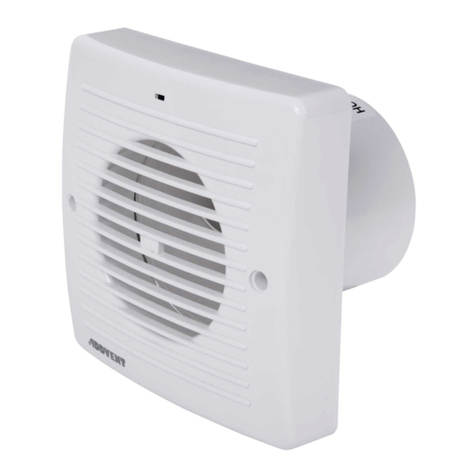
Addvent
Addvent AVX100QS operating instructions
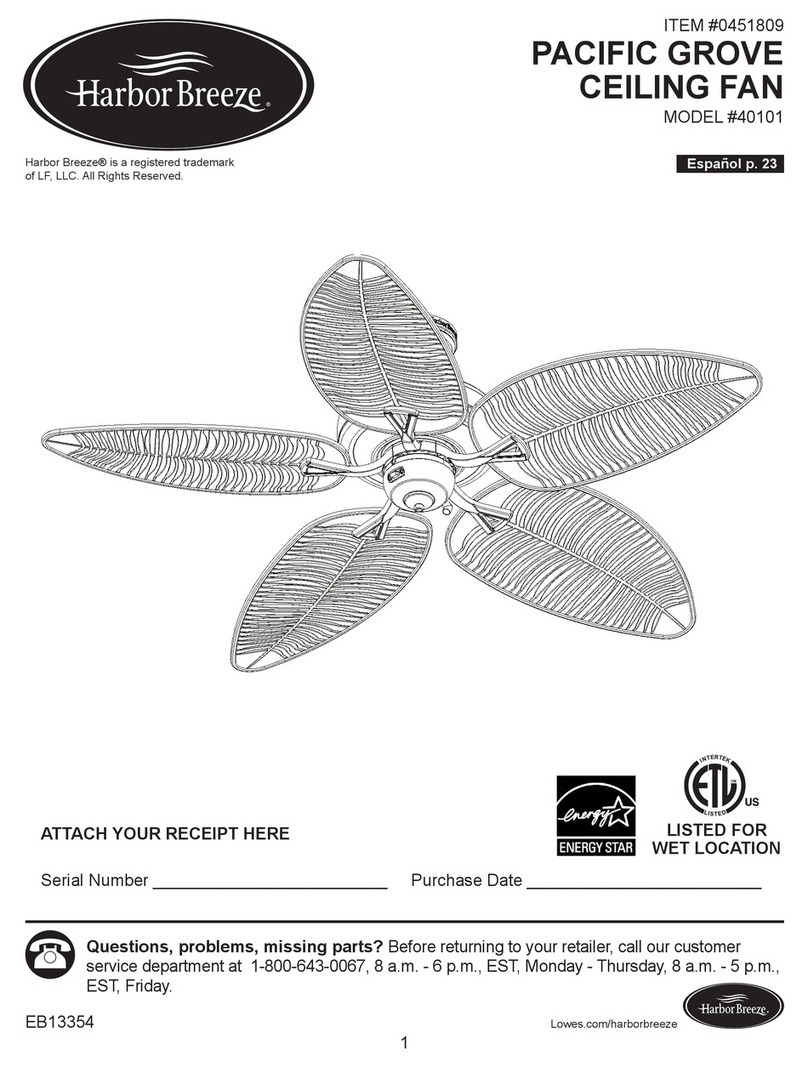
Harbor Breeze
Harbor Breeze PACIFIC GROVE 40101 installation guide

Craftmade
Craftmade Pro Energy Saver 209 installation guide
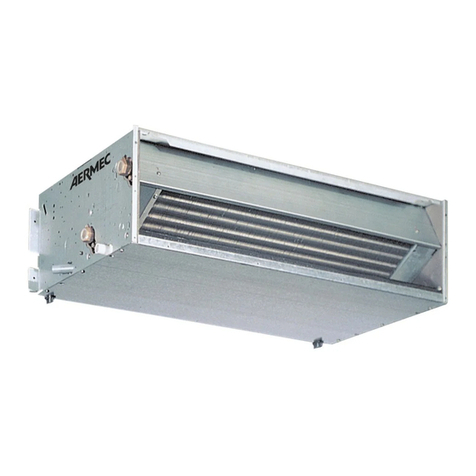
AERMEC
AERMEC FCX-P Series Use and installation manual
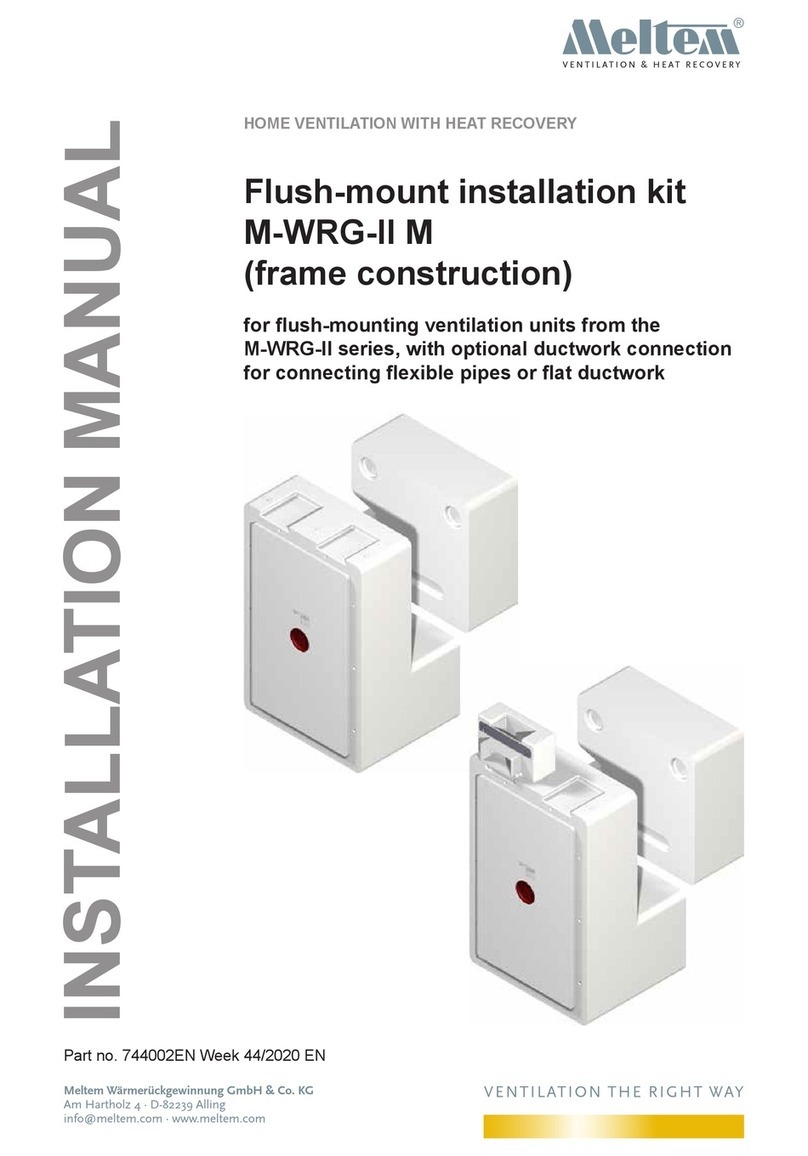
Meltem
Meltem M-WRG-II M installation manual
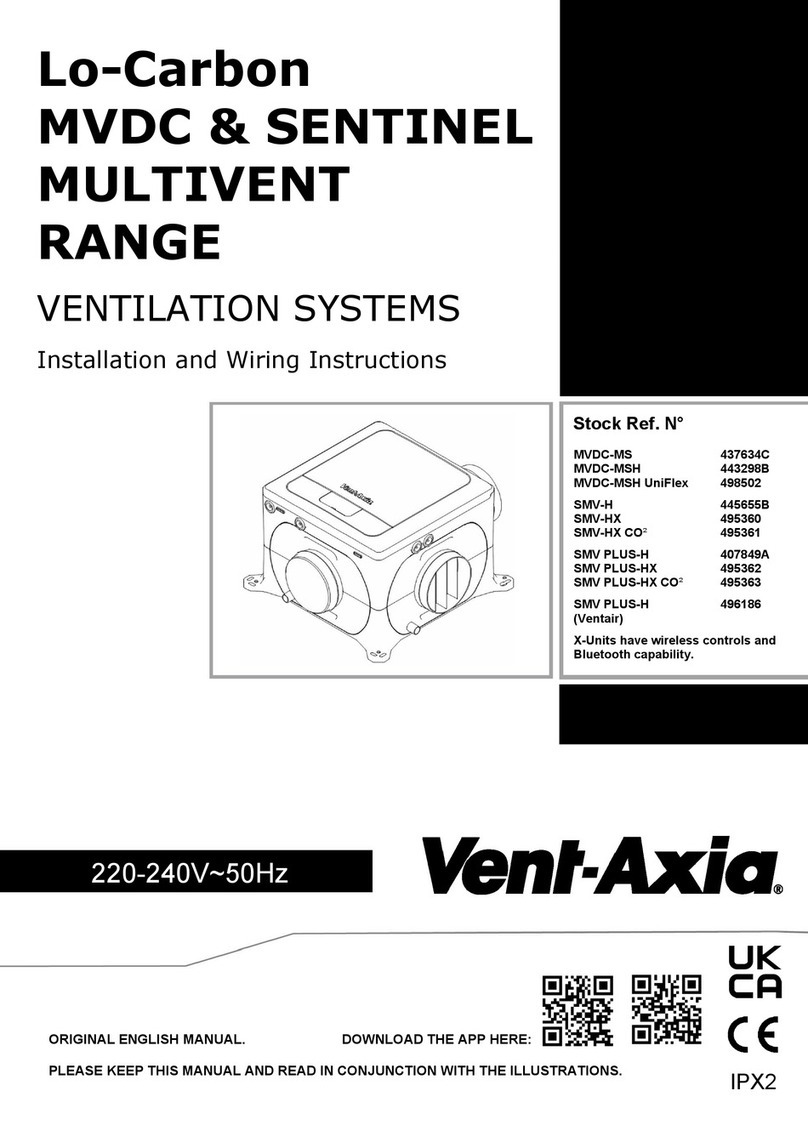
Vent-Axia
Vent-Axia MVDC-MSH UniFlex Installation and wiring instructions
